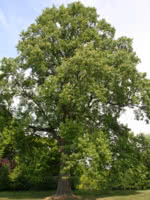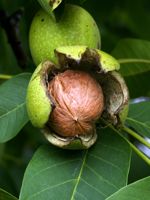Mon-Fri 9am - 5pm Mountain time
Tulip Poplar vs Carpathian English Walnut
Liriodendron tulipifera
Juglans regia Carpathian
NOT AVAILABLE THIS SEASON - MIGHT RETURN
NOT AVAILABLE THIS SEASON - MIGHT RETURN
Tulip Poplar is the perfect shade tree for wide open spaces. It has a shallow and extensive root system, so ensure you give it space to grow. The attractive and showy, yellow-orange, tulip shaped flowers are where this tree gets its name.
Tulip Poplar is somewhat rare in Canada but highly sought after as it is difficult to grow. Does best in a moist, well-drained soil.
Carpathian English Walnut is a great shade tree or a fantastic addition to a food garden. The taste is described as having a full flavour with a hint of sweetness and butterscotch. They are great for fresh eating, cooking, and baking. Thin shelled nuts split right down the center, making them easy to crack. Harvest ranges from late September to early October.
It is known for being highly productive and more cold hardy than other English Walnut varieties.
Carpathian English Walnut is considered to be self pollinating but planting with a second variety will result in greater yields. It can be cross pollinated with Black Walnut and others.

